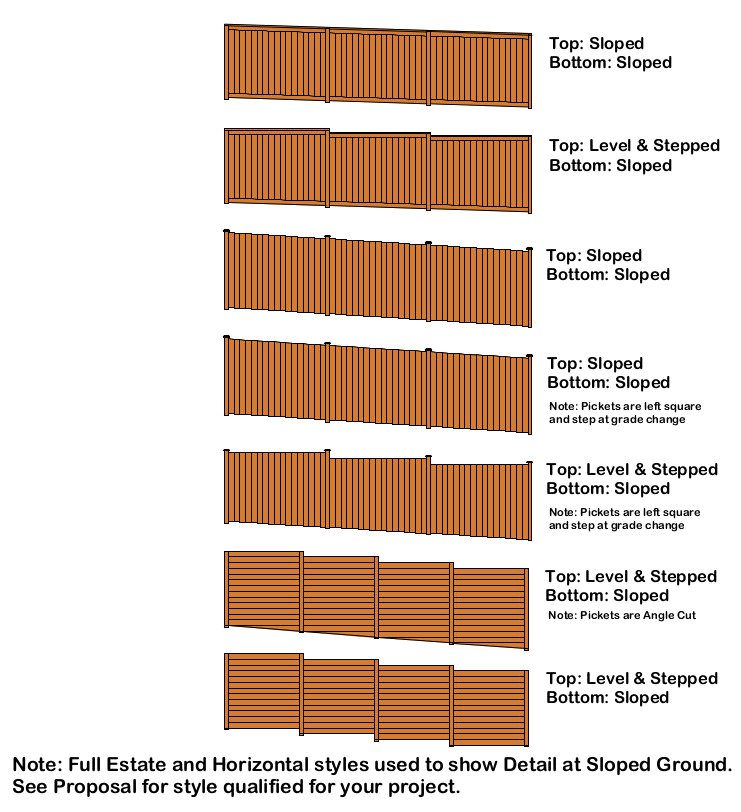Your home is undoubtedly your most valuable asset.
As such, it warrants fencing that is special and unique, underscoring your individual sense of style.
Our selection of fence designs can be individualized to enhance any setting and yet still perform the important functions of providing security and privacy, defining boundaries and serving as the backdrop to landscaping and gardens.
Whatever its purpose, a fence can function in many ways, but the first step is deciding what you’re looking for to choose one that works for you. Next, consider how you want your fence to be built – pay attention to important features including post type, materials, fence height, picket style and more.
See our glossary of fence terminology below >
FENCE ANATOMY
It is helpful to start by understanding the anatomy of a typical modern or traditional fence.
KEY DECISIONS
Height: One of the first decisions you will need to make is how tall your new fence will be. Typically, fences in front yards, for example, are 4 feet tall and backyard fences are 6 feet tall.
Material: Another important consideration is the material we will use – most often, we build our fences using tight knot cedar or clear cedar.
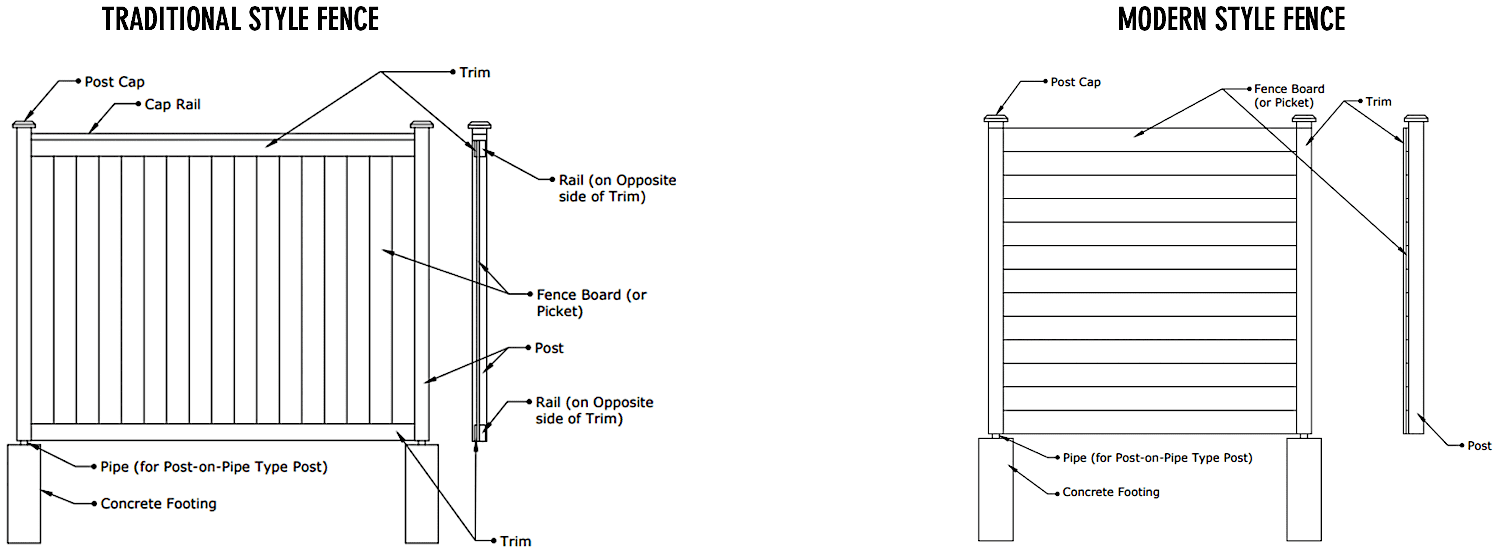
FENCE POST BASES
When designing your new fence, it is critical to ensure that the posts are protected from moisture rot. For new fences, we use the Post on Pipe method on new concrete. Where we are using existing concrete, we recommend Post-on Pipe with Base Plate or Saddle Post Base methods. All of these methods create a separation between the wooden post and the concrete base which reduces the danger for rotting.
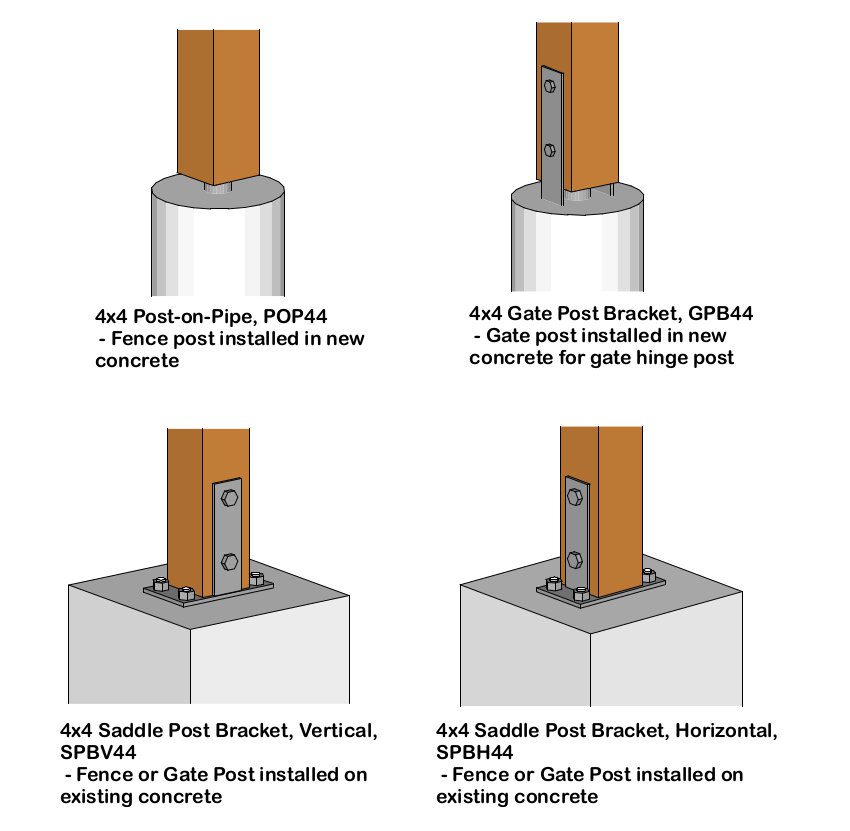
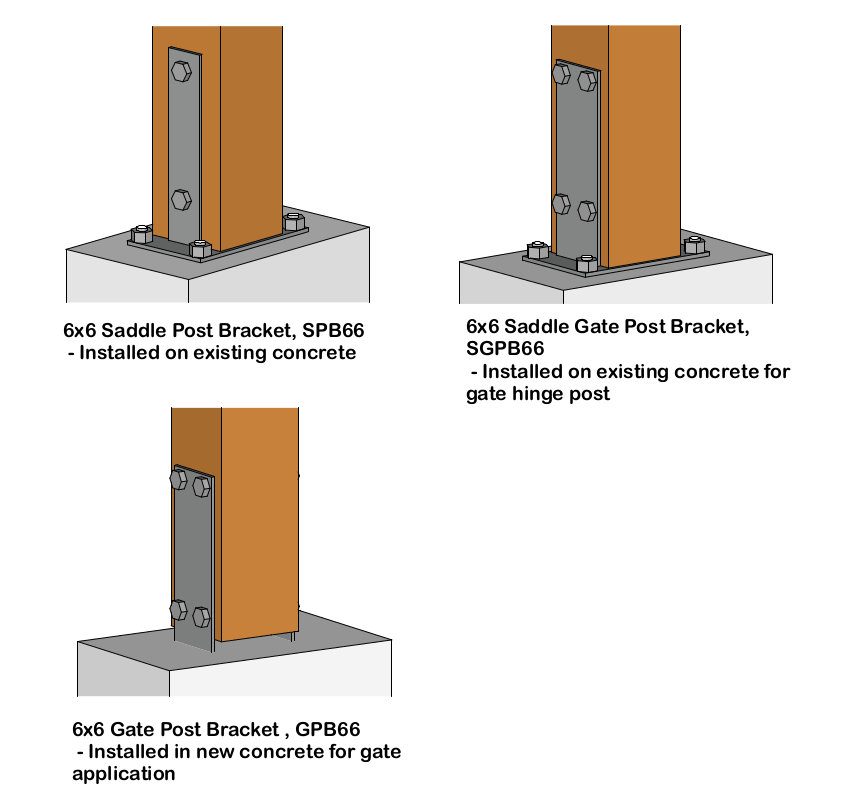
PICKET STYLES
Pickets can vary in height, width and spacing and can be customized to your style, security, and privacy needs.
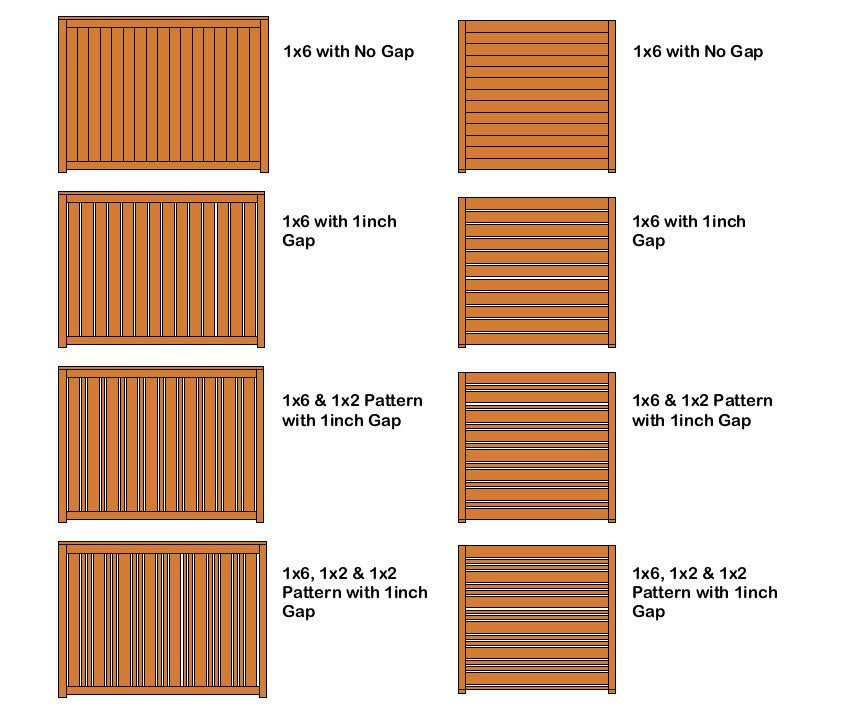
BUILDING A FENCE ON A SLOPE
Building a fence on a slope can be challenging, since the posts and pickets remain plumb regardless of the slope of the ground below it. Because we will construct your new fence from individual pickets, each picket can be staggered or “racked” to follow the contour of the land. This means the length of the posts and pickets remains the same throughout, regardless of the slope. Since we’re building the fence from scratch, it can hug the ground in a close curve without gaps under it.
Alternatively, we can build your fence on a slope using the stepped method where an entire section is stepped up or down so it remains level. The posts are installed plumb, and each panel steps lower or higher as the grade changes. This allows the overall line of the fence to follow the slope in a stair-step fashion.
